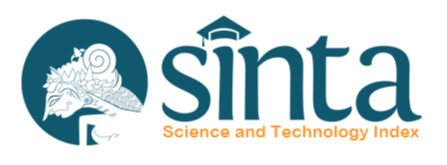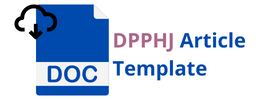| ..:: MENU ::.. |
| Editorial Team |
| Reviewer |
| Contact |
Author Guidelines
HOW TO SUBMIT YOUR MANUSCRIPT
Details on the structure of manuscripts published in Disease Prevention and Public Health Journal (DPPHJ) can be found in the template guidelines of Disease Prevention and Public Health Journal (DPPHJ) (Guide Template DPPHJ). Starting on Volume 16, we use the new template, while submitting the manuscript before August 2021 could use this guideline. All manuscripts should be submitted online at http://journal2.uad.ac.id/index.php/dpphj/login, by following THE GUIDELINES.
A. General Guidelines
Papers are invited from anywhere in the world, and so authors are asked to ensure that sufficient context is provided for all readers to appreciate their contribution. The minimum standard requirements of Disease Prevention and Public Health Journal must be:
-
The type of papers that may be considered for inclusion are: 1) Original research; 2) Short communications; 3) Review papers, which include meta-analysis and systematic review; 4) Interview papers.
-
Ensure that each new paragraph is clearly indicated. Present tables and figure legends on separate pages at the end of the manuscript. Number all pages consecutively.
-
Manuscripts should also be spell-checked by the facility available in most good word-processing packages.
-
The extensive use of italics and emboldening within the text should be avoided.
-
Papers should be clear, precise, and logical and should not normally exceed 5,000 words or at least 5 pages and no more than 20 pages. Editors will be evaluated if the papers are needing more pages than 16 pages.
-
Use a tool such as Zotero, Mendeley, or EndNote for reference management and formatting (or use the manual references if difficult).
-
Make sure that your paper is prepared using Guide Template DPPHJ.
B. Structure of The Manuscript
The manuscript must be prepared and suggested present in the section structure; Introduction, Method, Results, Discussion, and Conclusion which is explained as follows:
TITLE
The title of the article should be fewest 6-20 words, without Acronym or abbreviation accurately describe the content, no time and location of research.
ABSTRACT
-
The abstract should be informative and completely self-explanatory, provide a clear statement of the problem, the proposed approach or solution, and point out major findings and conclusions.
-
Also, it should be 150 to 250 words in length and written in the past tense with no citation.
INTRODUCTION
-
The introduction should provide a clear background, a clear statement of the problem, the relevant literature on the subject, the proposed approach or solution, and the new value of research which is innovation. It should be understandable to colleagues from a broad range of scientific disciplines.
-
Some components, such as multi-level equations, graphics, and tables are not prescribed.
- Introduction should written 3-5 paragraph, contains: 1) Problem; 2) Previous Research about the topic; 3) The weakness of previous research; 4) Contribution/goal of the research. It should define the purpose of the work and its significance.
MATERIALS AND METHOD
-
Materials and method should be described with sufficient details to allow others to replicate and build on published results. Please note that publication of your manuscript implicates that you must make all materials, data, computer code, and protocols associated with the publication available to readers.
-
New methods and protocols should be described in detail while well-established methods can be briefly described and appropriately cited.
-
Method explaining research chronological, including research design and research procedure. The description of the course of research should be supported references, so the explanation can be accepted scientifically.
- Interventionary studies involving animals or humans, and other studies require ethical approval must list the authority that provided approval and the corresponding ethical approval code.
-
It is hoped that it can provide a research flow with image visualization. If quantitative research and data analysis uses statistical tests, please write down the type of software and version in detail.
RESULT
-
The results section should be explained the results of the research.
-
The results can show tables and/or figures which are presented center. The resolution min. 300 dpi (good/hight quality), max 5 (five) table and/or figure. The table should not be truncated with different pages. Interpretation is placed above table or figure.
DISCUSSION
-
The discussion section should be explained the results and at the same time is given a comprehensive discussion. It shoutl not have bullets or numbering.
- Author should write down the weakness and strength of the research.
-
Some previous research and judgment should be added in this section.
CONCLUSION
-
A good conclusion should provide a statement that what is expected, as stated in the "Introduction" section can ultimately result in the "Results and Discussion" section, so there is compatibility.
-
It can also be added the prospect of the development of research results and application prospects of further studies in the next (based on the results and discussion).
REFERENCE
-
References in the manuscript have an important role in many parts of a publication. Disease Prevention and Public Health Journal used reference manager (e.g. EndNote, RefWorks, Zotero, Mendeley) by Vancouver style in order of appearance and indicated by a numeral or numerals in square brackets, e.g., [1] or [2,3], or [4–6]. These tools also make it easy to format, add, and remove references in your manuscript.
-
References should be cited in the text. Only references cited in the text should be listed at the end of the paper.
-
Expect a minimum of 30 references primarily with a minimum of 100% to international journal papers from Science Direct or indexed by the Scopus database. Please, don't use unpredictable website sources with active doi link.
KEYWORDS
-
The keyword list provides the opportunity to add keywords, used by the indexing and abstracting services, in addition to those already present in the title.
-
Judicious use of keywords may increase the ease with which interested parties can locate our article. The keyword should be 3 to 5 words.
One author should be designated as the corresponding author and provide the following information:
- Institutional affiliation
- E-mail address
- Full postal address
- Telephone and/or fax numbers
Please note that any papers which fail to meet our requirements will be returned to the author for amendment. Only papers that are submitted in the correct style will be considered by the Editors.






